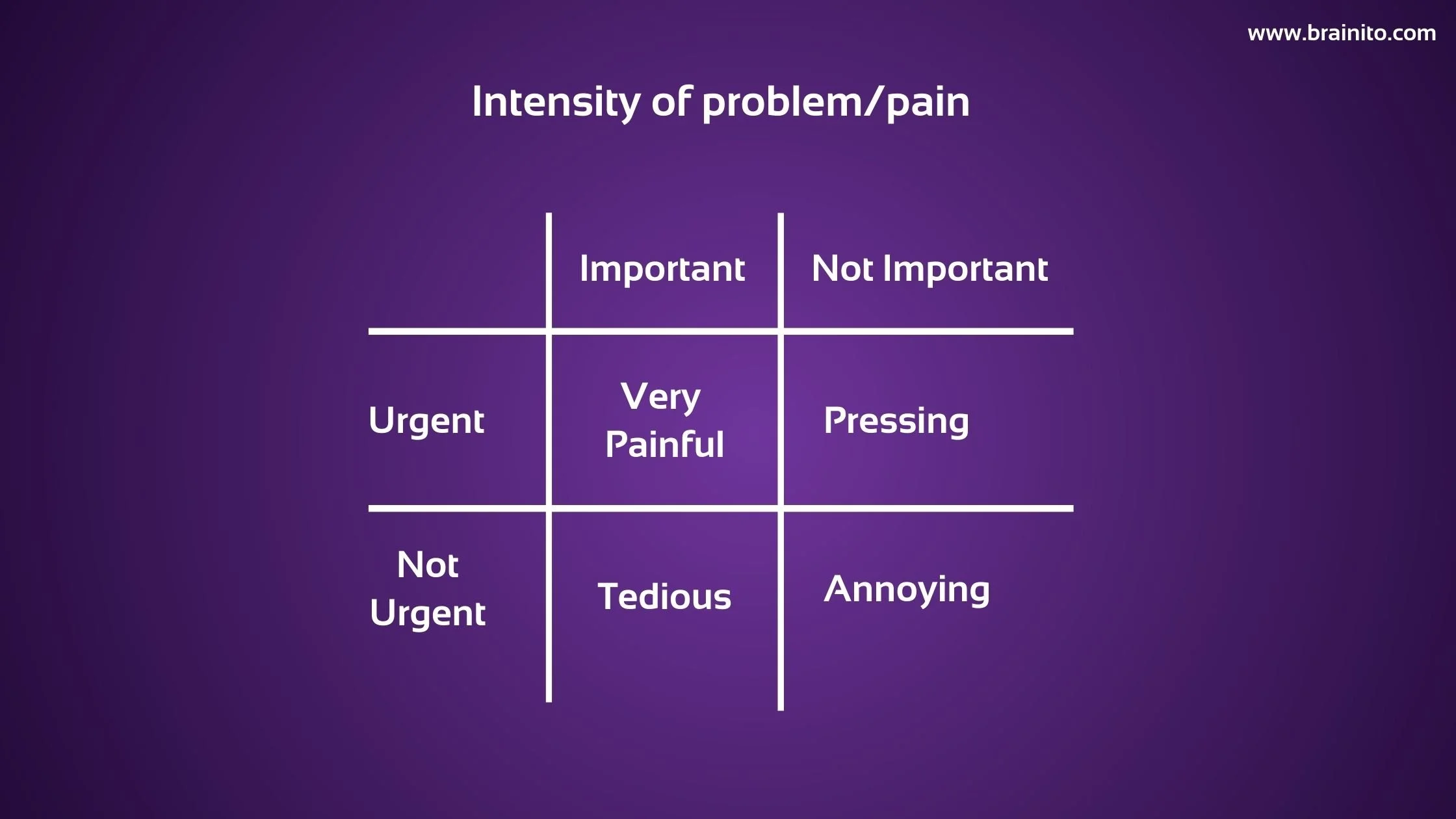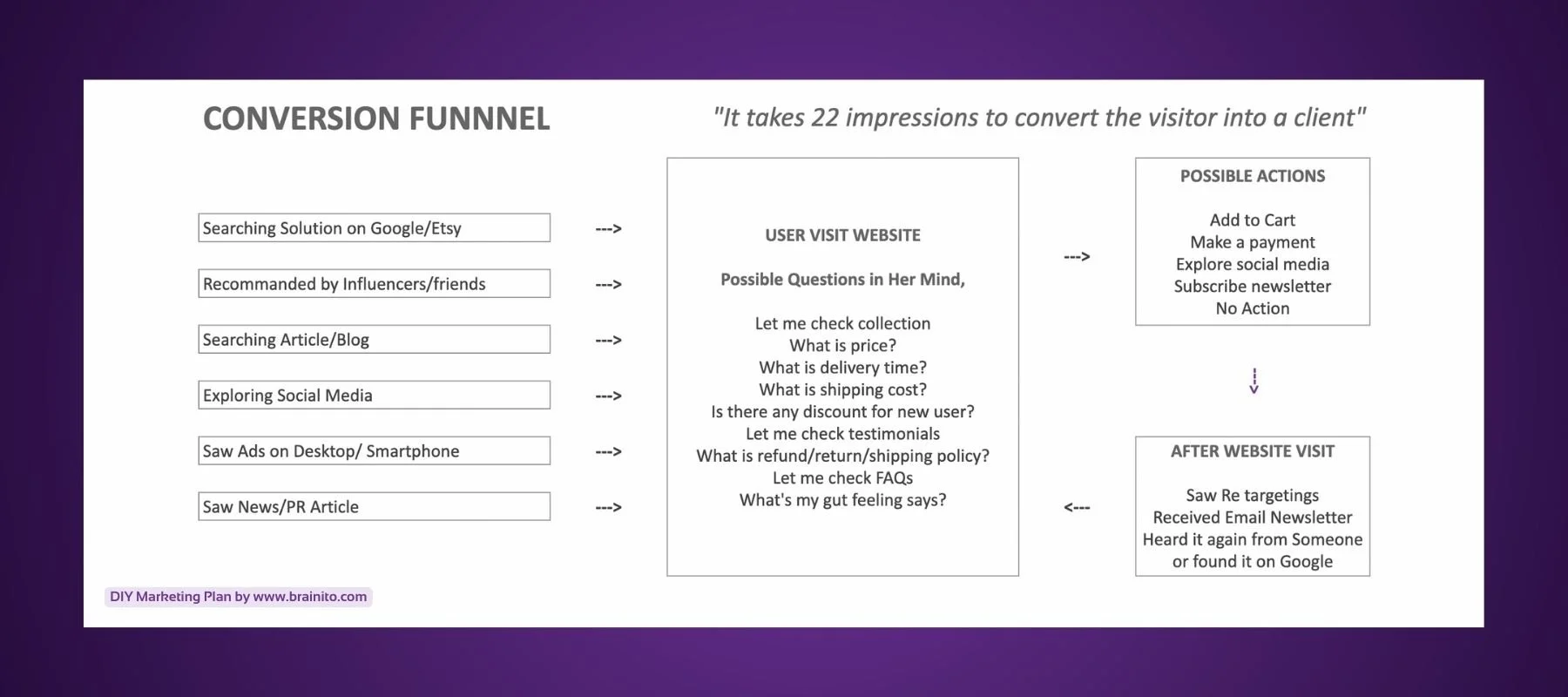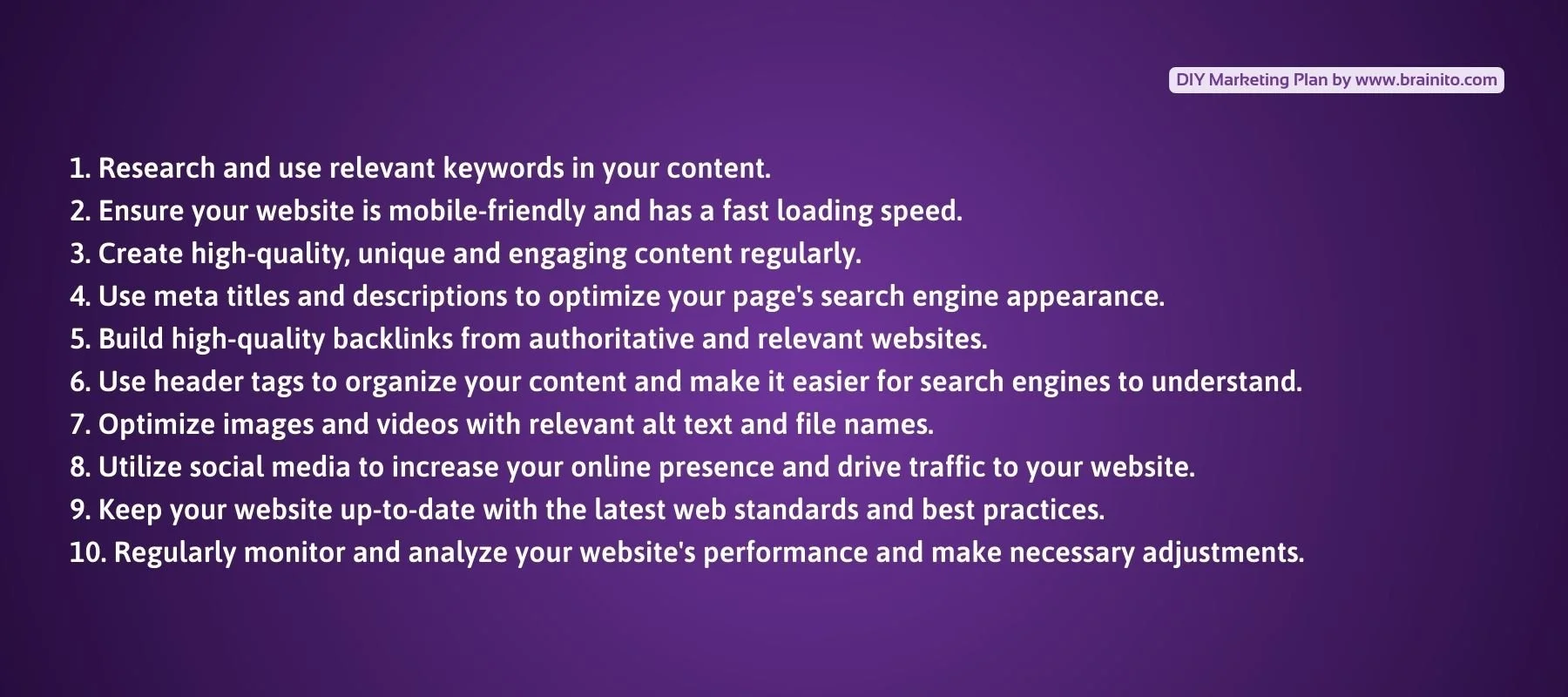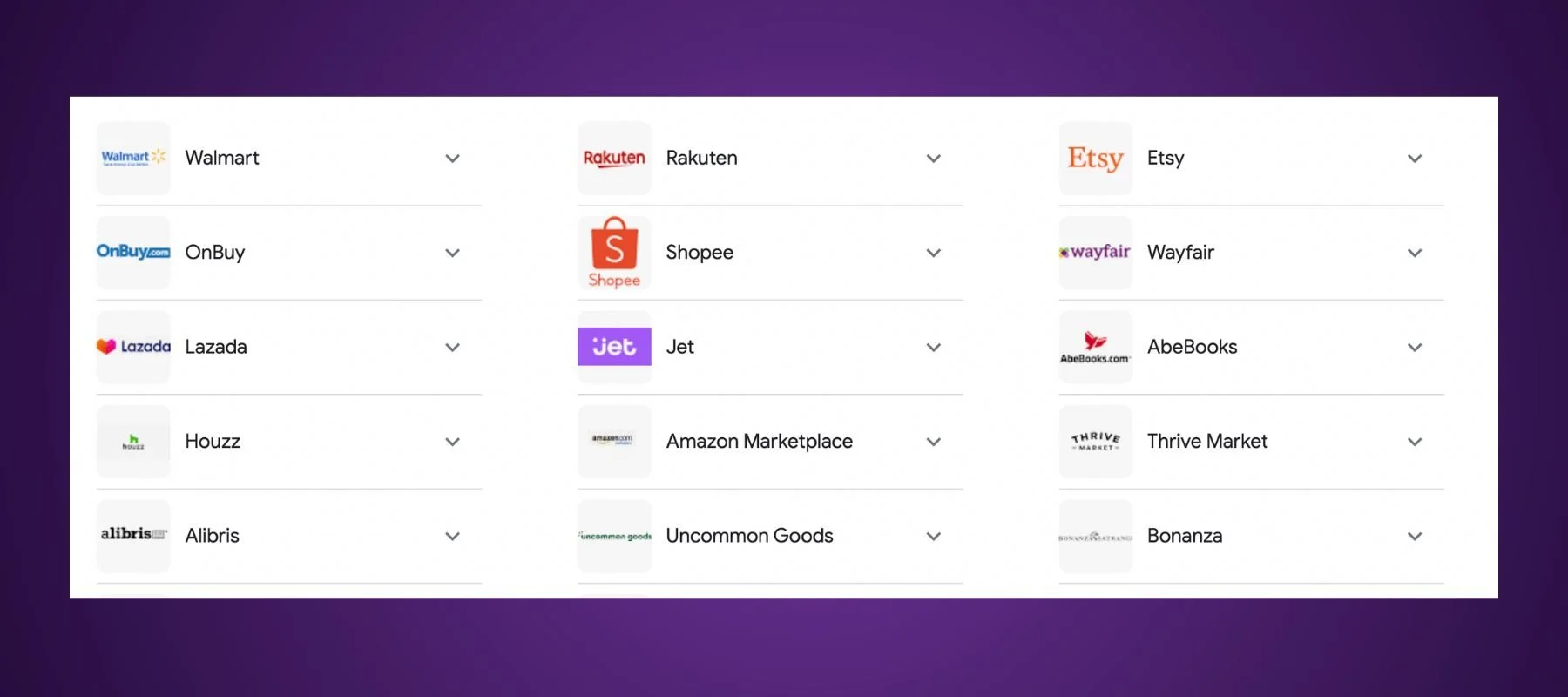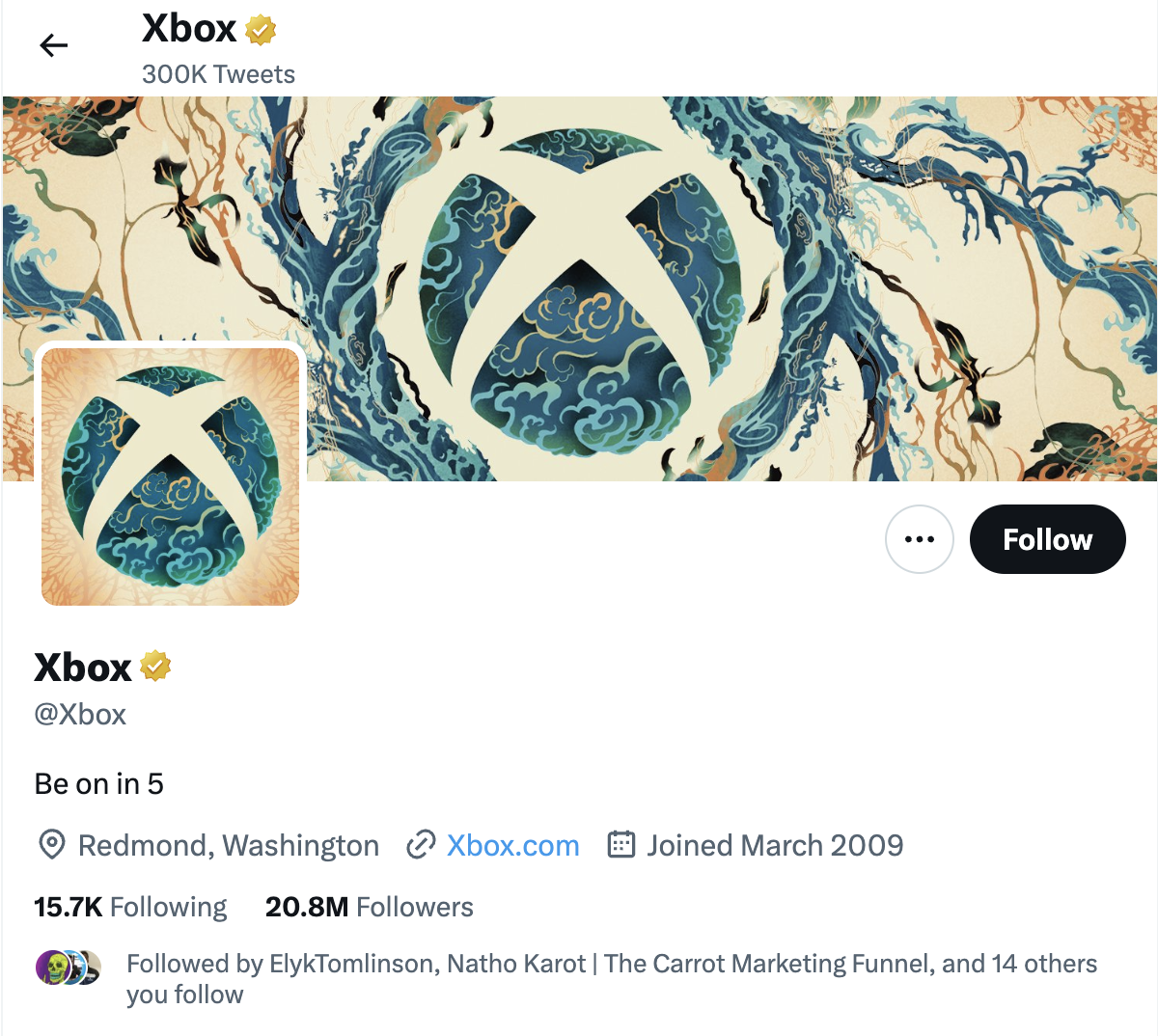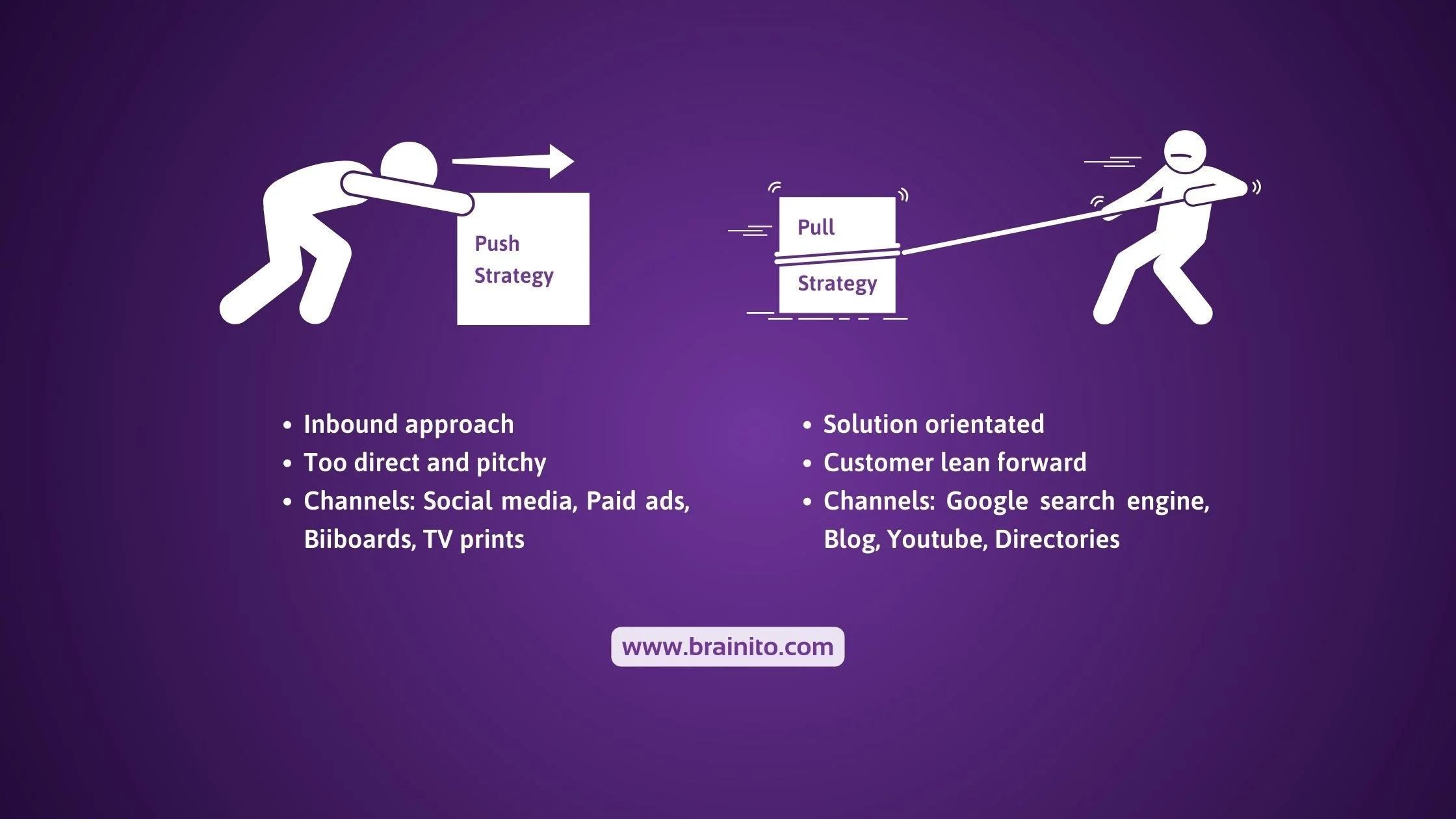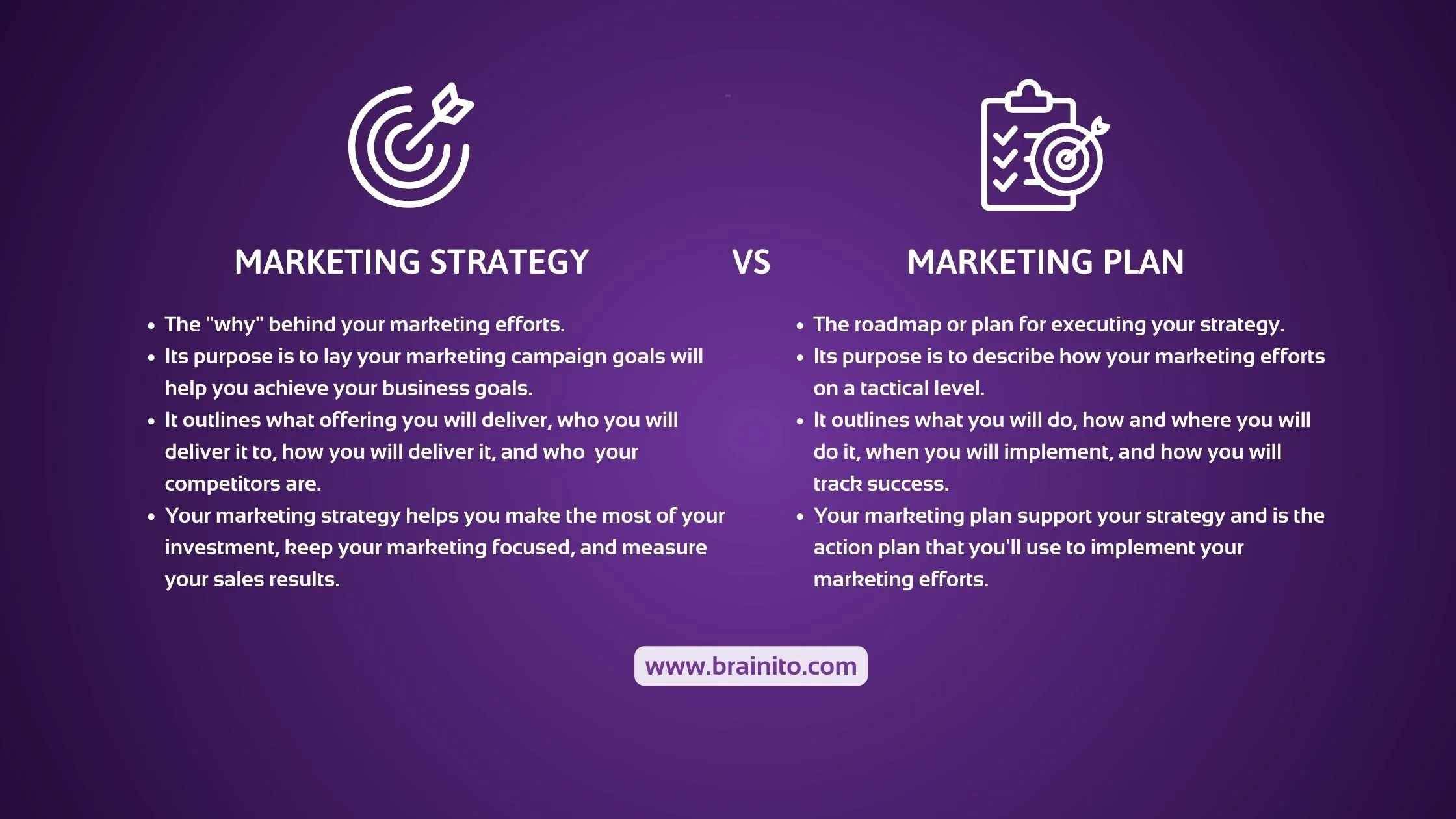Marketing Strategy 101: The Basics You Need to Know
What is Marketing Strategy?
Marketing strategy is a long-term plan that outlines an organization's approach to promoting and selling its products or services. It considers the target audience, competition, and available resources, and aims to build brand awareness, increase customer loyalty, generate leads, and drive revenue growth.
It's important to note that marketing strategy is not a one-time task, but an ongoing process that evolves and iterates as the market changes. A successful marketing strategy requires continuous monitoring, analysis, and adjustment to keep up with market trends, customer preferences, and competition.
As new technologies emerge, customer behavior evolves, and the competitive landscape shifts, marketers must be prepared to adapt their strategies accordingly. This may involve testing new channels, revising messaging and branding, adjusting pricing and promotion strategies, or pivoting to target new markets altogether.
By regularly evaluating the effectiveness of their marketing efforts and making strategic adjustments as needed, businesses can stay ahead of the curve and maintain a competitive edge in their industry. The ability to pivot and iterate is essential in today's rapidly changing business environment, and marketers who can do so effectively will be well-positioned for success.
Importance of Marketing Strategy
In addition to providing clarity about the existing market and a clear roadmap to achieving goals, a well-crafted marketing strategy can also save businesses time, money, and resources. By analyzing market trends, customer behavior, and competition, businesses can identify the most effective marketing channels, messaging, and tactics. This enables them to focus their efforts and resources on activities that are most likely to generate results, rather than experimenting with costly and potentially ineffective strategies. By having a well-defined budget, businesses can also avoid overspending on marketing initiatives that are unlikely to achieve the desired return on investment. Overall, a well-crafted marketing strategy is an essential tool for businesses looking to achieve long-term success while minimizing risk and waste.
Here are 5 solid benefits of having a solid marketing strategy:
Provides clarity about the existing market, target audience, and competition
Guides resource allocation and budgeting for maximum effectiveness
Saves time and money by avoiding costly experiments and ineffective tactics
Helps build brand awareness, generate leads, and drive revenue growth
Enables businesses to adapt to changes in the market and stay ahead of the competition.
How to Create a Marketing Strategy?
To create a marketing strategy, businesses should define their goals, analyze their target audience, develop a unique value proposition, assess their SWOT, evaluate the competition, and identify the most effective marketing channels, tactics, and messaging. A detailed plan should be developed for pricing, promotion, product development, and distribution.
Marketing Strategy Framework By Brainito
At Brainito, we believe that a well-crafted marketing strategy is critical for the success of any business. That's why our team has developed a marketing strategy framework that has proven to be highly effective in creating successful marketing plans. Our framework was originally designed for internal use, but we quickly realized that it was a valuable tool that could benefit other businesses as well. Over time, we have refined and evolved our framework to make it more effective, and we have now used it to create over 1500 marketing plans. Our framework consists of a comprehensive set of tools and templates that help us analyze markets, identify opportunities, and develop effective marketing strategies. We are proud of the success we have achieved with our framework, and we are excited to share it with other businesses looking to take their marketing efforts to the next level.
Step1. Build a product or service that solves a real problem and is worth paying for.
The first step in creating a successful marketing strategy is to build a product or service that solves a real problem and is worth paying for. This may seem like an obvious step, but it is critical for the success of your marketing efforts. Without a valuable product or service, no amount of marketing will be able to generate sustainable success. Start by identifying a real problem that your target audience is facing and develop a product or service that solves that problem. Conduct market research to gain a deep understanding of your potential customers and their needs. Once you have developed a product or service that truly solves a problem and offers real value to your target audience, you can move on to the next steps in developing your marketing strategy.
Step2. Analyze market demand on search engines to identify the keywords and phrases people use to search for solutions to their problems
The second step in creating a successful marketing strategy is to analyze the market demand on search engines. This involves identifying the keywords and phrases that people use to search for solutions to their problems. By conducting keyword research, you can gain insights into the specific terms and phrases that your target audience is using to find solutions to their problems. This will help you to develop targeted content that is optimized for search engines and appeals to your potential customers. Use tools like Google Keyword Planner, Ahrefs, or SEMrush to identify the most relevant and high-traffic keywords in your industry. By analyzing the market demand on search engines, you can gain valuable insights into the needs and wants of your target audience and develop content that addresses those needs.
Step3. Analyze market demand on social media to identify the conversations and topics that are relevant to your target audience.
The third step in creating a successful marketing strategy is to analyze the market demand on social media. This involves identifying the conversations and topics that are relevant to your target audience. By monitoring social media platforms, you can gain insights into the interests and behaviors of your target audience, and identify the trends and topics that are relevant to them. This information can be used to develop targeted content that resonates with your audience and engages them in meaningful conversations. Use social media listening tools like Hootsuite, Mention, or Brandwatch to track conversations and keywords related to your industry or product. By analyzing the market demand on social media, you can gain a better understanding of your target audience and develop content that addresses their specific needs and interests.
Step4. Analyze market demand on digital marketplaces to understand the products and services that are popular with your potential customers.
The fourth step in creating a successful marketing strategy is to analyze market demand on digital marketplaces. This involves understanding the products and services that are popular with your potential customers by examining what they are buying on online marketplaces like Amazon, Etsy, or eBay. By analyzing the top sellers in your industry or product category, you can gain insights into what features, benefits, or price points are resonating with your target audience. This information can help you to refine your product offering, adjust your pricing strategy, or differentiate your product from the competition. Additionally, by studying customer reviews, you can identify pain points or areas for improvement that you can address in your marketing messaging or product development. Analyzing market demand on digital marketplaces can provide valuable insights to help you position your product for success.
Step5. Perform competitor analysis to identify your competitors' strengths and weaknesses, and determine how you can differentiate your offering.
The fifth step in creating a successful marketing strategy is to perform competitor analysis. This involves researching and analyzing your competitors to identify their strengths and weaknesses, as well as their marketing strategies. By doing so, you can determine how you can differentiate your offering and stand out in a crowded market. You can identify opportunities to improve your product or service, as well as gaps in the market that you can fill. Competitor analysis also allows you to identify potential threats and challenges that you may face, such as new product launches or changes in the market. By understanding your competitors' marketing strategies, you can determine how you can position your product or service to appeal to your target audience and stand out in the market. Ultimately, performing competitor analysis is an essential step in developing a successful marketing strategy.
Step6. Figure out potential buyers' pain points and create buyer personas to understand their needs, preferences, and behaviours.
Sixth step involves identifying the pain points of your potential buyers and creating buyer personas to understand their needs, preferences, and behaviors. You need to understand what motivates your customers to buy your product or service, what challenges they face, and how you can address those challenges. Creating buyer personas can help you segment your target audience into specific groups and tailor your marketing messages accordingly. This step requires extensive research, including surveys, interviews, and data analysis, to gain insights into your customers' demographics, psychographics, and buying behavior. Once you have a clear understanding of your buyer personas, you can develop more effective marketing strategies that resonate with your target audience.
Step7. Build a possible buyer journey to understand how customers will interact with your product or service.
Building a possible buyer journey is crucial in understanding how customers will interact with your product or service. This step involves creating a roadmap that outlines the steps a potential buyer might take to become a paying customer. The buyer journey typically includes different stages such as awareness, consideration, and decision-making. By mapping out the buyer journey, you can identify potential roadblocks or areas of improvement, and create a strategy to guide customers through the buying process. Understanding the buyer journey is also critical in developing targeted marketing messages and campaigns that speak directly to potential customers at each stage of the journey.
Step8. Brainstorm all possible marketing channels and project the outcome of each marketing strategy. Choose one that suits your budget and goals
Eighth step is an important step in creating a marketing strategy. After understanding your target audience and their preferences, you need to brainstorm the marketing channels that can help you reach them effectively. This may include SEO, social media, email marketing, paid advertising, content marketing, and more. It's important to consider the strengths and weaknesses of each channel and project the outcome of each marketing strategy. This will help you determine which channel is the most suitable for your business based on your budget and goals. A well-crafted marketing strategy that incorporates the right marketing channels can help you reach your target audience, increase brand awareness, and drive sales.
Define SEO Marketing strategy
An SEO (Search Engine Optimization) marketing strategy is the process of optimizing your website to increase the quantity and quality of traffic from search engines like Google, Bing, and Yahoo
Defining an SEO marketing strategy involves several key steps:
Identify target keywords: Determine the keywords and phrases that your potential customers are searching for in search engines.
Analyze competition: Analyze the websites and SEO strategies of your competitors to determine what is working and what can be improved upon.
On-page optimization: Optimize your website's content, structure, and meta tags for the target keywords.
Off-page optimization: Build backlinks from high-quality, relevant websites to improve your website's authority and ranking.
Content marketing: Develop and publish high-quality, keyword-rich content on your website and other relevant platforms to attract backlinks and increase your website's authority.
Tracking and analysis: Monitor your website's traffic, rankings, and conversions to track the success of your SEO marketing strategy and make adjustments as necessary.
Partnership & B2B Marketing strategy
Identify potential partners: Research potential companies and partners that align with your business objectives, target audience, and values.
Establish a mutually beneficial partnership: Identify how your businesses can help each other grow by offering complementary products or services or access to a new market.
Determine your partnership goals: Establish clear and measurable goals for the partnership, such as increased brand awareness, lead generation, or revenue growth.
Develop a communication plan: Establish regular communication with your partner to ensure alignment and collaboration on marketing efforts.
Create joint marketing campaigns: Develop joint marketing campaigns that showcase the partnership and promote each other's products or services.
Measure and analyze results: Track and measure the success of the partnership, including metrics such as website traffic, leads generated, and sales revenue.
By following these steps, you can create a successful partnership B2B marketing strategy that benefits both your business and your partners.
Product distribution strategy
Identify your target market: Identify the customers or businesses that you want to sell your products to.
Determine your distribution channels: Evaluate the different distribution channels available to you, such as online marketplaces, retail stores, direct sales, and wholesalers.
Research your competition: Look at how your competitors are distributing their products and identify gaps in the market that you can fill.
Develop a pricing strategy: Determine the price of your product, taking into account the costs of distribution.
Develop a marketing plan: Create a plan to promote your product through various marketing channels, such as social media, email marketing, and paid advertising.
Establish relationships with distributors: Identify and establish relationships with distributors who can help you reach your target market.
Optimize your distribution channels: Continuously monitor and optimize your distribution channels to ensure they are effective and efficient.
By following these steps, you can create an effective product distribution strategy that helps you reach your target market and grow your business.
Industry Specific Business directories
Registering on industry-specific business directories can increase your online visibility and credibility within your target market. It also provides potential customers with an easy way to find your business and connect with you. Additionally, it can improve your search engine rankings and help you stay ahead of your competitors.
Find Business directories by countries and professions
Affiliate Marketing strategy
Affiliate marketing can be a very effective marketing strategy for businesses. By partnering with affiliates who promote their products or services, businesses can reach new audiences and drive sales. Affiliate marketing works particularly well for businesses with digital products or services that can be easily promoted online. However, like any marketing strategy, the success of affiliate marketing depends on factors such as the quality of the product, the effectiveness of the affiliate program, and the ability to find and partner with high-quality affiliates.
Social media strategy
Defining a social media strategy involves several key steps:
1. Define your goals: What do you want to achieve with social media? Do you want to increase brand awareness, generate leads, or drive website traffic?
2. Identify your target audience: Who are your ideal customers and where do they spend their time on social media? Understanding your audience helps you tailor your content and messaging to their preferences.
3. Choose your social media platforms: Which social media platforms are most relevant to your target audience? Focus on the platforms where your audience is most active.
4. Create a content strategy: What type of content will resonate with your audience? Will you focus on text, images, videos, or a combination of all three? Develop a content calendar to keep your messaging consistent and timely.
5. Engage with your audience: Social media is a two-way conversation. Encourage feedback, respond to comments and messages, and participate in relevant conversations to build relationships with your audience.
6. Measure your results: Use social media analytics to track the success of your strategy. Adjust your tactics as needed to improve engagement and achieve your goals.
Instagram growth strategies
Here are some Instagram growth strategy ideas:
1. Create high-quality and visually appealing content that resonates with your target audience.
2. Use relevant hashtags to reach a wider audience and improve your discoverability.
3. Engage with your followers and respond to their comments and messages promptly.
4. Collaborate with other Instagram users and brands to increase your reach and credibility.
5. Utilize Instagram Stories, Reels, and IGTV to diversify your content and connect with your audience in different ways.
6. Run Instagram contests and giveaways to increase engagement and attract new followers.
7. Promote your Instagram account on other social media platforms and your website.
8. Consistently post at the optimal times when your audience is most active on the platform.
9. Use Instagram insights to track your performance and adjust your strategy accordingly.
Twitter growth strategy
Some ideas for Twitter growth strategy include:
1. Optimize your profile: Use a clear profile picture, header image, and bio to make your profile stand out.
2. Tweet consistently: Regularly post interesting and relevant content to keep your followers engaged.
3. Use hashtags: Use relevant hashtags to increase your visibility and reach new audiences.
4. Engage with your followers: Respond to comments, retweet relevant content, and interact with your followers to build relationships.
5. Run Twitter ads: Use Twitter's advertising platform to target specific audiences and increase your reach.
6. Join Twitter chats: Participate in relevant Twitter chats to connect with others in your industry and increase your visibility.
7. Collaborate with influencers: Partner with influencers in your industry to reach new audiences and increase your brand awareness.
8. Utilize Twitter analytics: Use Twitter's analytics tools to track your performance and optimize your strategy over time.
Facebook growth strategy
Here are some Facebook growth strategy ideas:
Create and share valuable content: Share engaging and informative posts that add value to your audience's lives.
Leverage Facebook groups: Join and engage in relevant Facebook groups related to your business niche.
Use Facebook Live: Use live video to connect with your audience and showcase your brand's personality.
Host giveaways and contests: Host giveaways and contests to attract new followers and encourage engagement.
Invest in Facebook advertising: Use Facebook's advertising platform to reach a wider audience and increase visibility.
Collaborate with other brands: Partner with complementary brands to expand your reach and tap into their audience.
Encourage user-generated content: Encourage your followers to create and share content featuring your brand.
Optimize your profile: Make sure your profile is complete and up-to-date with a clear and compelling description and high-quality visuals.
Engage with your followers: Respond to comments and messages in a timely and friendly manner to build relationships with your audience.
Monitor and analyze performance: Use Facebook Insights to track your performance and adjust your strategy accordingly.
Pinterest growth strategy
Here are some ideas for Pinterest growth strategy:
1. Optimize your profile: Create a complete profile with a clear profile picture, bio, and board descriptions. Use relevant keywords in the description to make it searchable.
2. Create eye-catching pins: Use high-quality images and design attractive graphics that stand out in the feed. Make sure the pins are vertically oriented, as this is the preferred format on Pinterest.
3. Use keywords: Use relevant keywords in your pins, boards, and descriptions to make them discoverable in search results.
4. Pin consistently: Pin regularly to keep your profile active and engaged. Aim for at least 10-20 pins per day.
5. Join group boards: Join relevant group boards in your niche to reach a wider audience and get more engagement on your pins.
6. Promote your pins: Promote your pins using Pinterest Ads to reach more people and drive traffic to your website.
7. Collaborate with influencers: Partner with influencers in your niche to create and share content that promotes your brand and products.
8. Analyze your performance: Use Pinterest Analytics to track your performance and identify what's working and what's not. Use this data to refine your strategy and optimize your pins and boards for better results.
Tiktok growth strategy
Here are some TikTok growth strategy ideas:
1. Consistently create high-quality content that is relevant to your target audience.
2. Use popular hashtags to increase the visibility of your videos.
3. Collaborate with other TikTok creators to expand your reach.
4. Participate in TikTok trends and challenges to increase engagement and gain followers.
5. Utilize TikTok's advertising platform to reach a larger audience.
6. Promote your TikTok account on your other social media channels and website.
7. Engage with your followers by responding to comments and messages.
8. Use analytics to track the performance of your content and adjust your strategy accordingly.
Youtube video strategy
To define a YouTube video strategy, you should consider the following steps:
1. Identify your target audience and their interests: Knowing who you want to reach will help you create content that is relevant and valuable to them.
2. Define your goals: Determine what you want to achieve with your YouTube videos. Examples could be building brand awareness, increasing website traffic, or generating leads.
3. Conduct keyword research: Find out what keywords your target audience is searching for on YouTube, and create content around those keywords.
4. Create a content calendar: Plan out the topics and titles of your videos in advance to ensure consistency and keep your audience engaged.
5. Optimize your videos for SEO: Use relevant keywords in your video titles, descriptions, and tags to improve visibility and search rankings.
6. Promote your videos: Share your videos on social media, embed them on your website, and include them in your email marketing campaigns.
7. Analyze your performance: Monitor your video metrics, such as views, likes, comments, and shares, to evaluate your success and identify areas for improvement.
Linkedin growth strategy
Here are some ideas for a LinkedIn growth strategy:
1. Optimize your profile: Make sure your LinkedIn profile is complete, up-to-date, and includes relevant keywords.
2. Create valuable content: Share valuable content on your profile and in LinkedIn groups to establish yourself as a thought leader in your industry.
3. Join LinkedIn groups: Join relevant LinkedIn groups and actively participate in discussions to increase your visibility and network with potential customers.
4. Connect with relevant people: Connect with relevant people in your industry, including potential customers, partners, and influencers.
5. Use LinkedIn ads: Use LinkedIn's advertising platform to target your ideal customers with sponsored content, sponsored InMail, and display ads.
6. Utilize LinkedIn's publishing platform: Publish articles on LinkedIn's publishing platform to showcase your expertise and reach a wider audience.
7. Leverage employee advocacy: Encourage your employees to share company content on their LinkedIn profiles to increase your reach and engagement.
8. Analyze and optimize: Use LinkedIn's analytics tools to track the performance of your posts and adjust your strategy accordingly.
Google ads strategy
Google Ads is an online advertising platform developed by Google that allows businesses to create and display ads on Google's search engine results pages, as well as on other websites that are part of the Google Display Network. Here are some ideas for a Google Ads strategy:
1. Identify relevant keywords that are related to your product or service and bid on them.
2. Create compelling ad copy that highlights the benefits of your offering and encourages users to click through to your website.
3. Use negative keywords to exclude irrelevant searches from triggering your ads.
4. Set up conversion tracking to measure the success of your campaigns and make data-driven decisions to optimize your ad spend.
5. Use audience targeting to show your ads to users who are most likely to be interested in your offering.
6. Utilize ad extensions to provide additional information and encourage clicks.
7. Experiment with different ad formats, such as text ads, display ads, and video ads, to see what works best for your business.
Facebook ads strategy
Here are some key steps for creating a Facebook ads strategy:
1. Define your objective: Decide on the goal of your Facebook ads campaign. Is it to increase brand awareness, generate leads, or drive sales?
2. Identify your target audience: Use Facebook's audience targeting tools to identify your ideal audience based on demographics, interests, and behaviors.
3. Create compelling ad content: Develop eye-catching visuals and copy that effectively communicates your message and value proposition.
4. Set your budget and bidding strategy: Determine how much you're willing to spend on your campaign and decide on your bidding strategy.
5. Choose the right ad format: Select the ad format that best suits your campaign goal and ad content, whether it's a single image ad, video ad, carousel ad, or others.
6. Test and optimize your ads: Run multiple variations of your ads to determine which one performs best and adjust your strategy based on the results.
7. Monitor and measure results: Keep track of your campaign metrics and adjust your strategy accordingly to optimize for better results.
Content marketing strategy
Here are some content marketing strategy ideas:
1. Create informative blog posts and articles that educate your audience about your industry and products/services.
2. Develop engaging and informative infographics that visually convey complex information.
3. Create videos that showcase your products, services, and company culture.
4. Develop in-depth whitepapers, case studies, and research reports that provide valuable insights to your audience.
5. Host webinars and online events that educate and engage your audience.
6. Create social media posts that are interesting, informative, and engaging.
7. Develop a content calendar that outlines your topics and publishing schedule.
8. Collaborate with other businesses or influencers to create guest posts, interviews, or podcasts.
9. Use SEO best practices to optimize your content for search engines.
10. Track and analyze the performance of your content to identify what works and adjust your strategy accordingly.
Email marketing strategy
Email marketing is a powerful tool for building relationships with your customers and driving conversions. Here are some ideas for email marketing strategies:
1. Welcome emails: Send a welcome email to new subscribers to introduce your brand and set expectations for future emails.
2. Abandoned cart emails: Remind customers about items they left in their cart and offer incentives to complete the purchase.
3. Promotional emails: Send emails announcing sales, promotions, and new products.
4. Educational content: Provide value to your subscribers by sharing informative content related to your products or industry.
5. Personalized recommendations: Use data and customer behavior to suggest products or services tailored to each individual subscriber.
6. Event invitations: Promote events or webinars to your email list and encourage signups.
7. Seasonal emails: Create campaigns around holidays or seasons to offer special deals or promotions.
8. Feedback requests: Ask for feedback from your customers to improve your products and services.
9. Re-engagement campaigns: Send targeted emails to subscribers who haven't engaged with your brand in a while, with the goal of rekindling their interest.
10. Newsletter: Send regular newsletters to keep subscribers up-to-date on your latest news and offerings.
Retargeting strategy
Retargeting strategies involve showing ads to people who have already shown interest in your product or service. Here are some ideas:
1. Abandoned cart retargeting - Show ads to people who have added items to their cart but haven't completed the purchase.
2. Website retargeting - Show ads to people who have visited your website but haven't converted.
3. Customer retention retargeting - Show ads to people who have already made a purchase to encourage repeat business.
4. Cross-sell/upsell retargeting - Show ads to people who have purchased a specific product or service to promote related or complementary offerings.
5. Lookalike audience retargeting - Show ads to people who are similar to your existing customers to reach new potential customers who are likely to be interested in your offering.
Outbound marketing strategy
Outbound marketing is a marketing strategy that involves reaching out to potential customers through various means, such as direct mail, telemarketing, and email campaigns. Here are some outbound marketing strategy ideas:
1. Direct mail campaigns with personalized messages
2. Telemarketing campaigns to reach out to potential customers and generate leads
3. Cold emailing to targeted prospects with personalized messages
4. Attending industry conferences and events to network and generate leads
5. Sponsorship of industry events or webinars to gain exposure and generate leads
6. Using paid advertising on social media platforms and search engines to reach targeted audiences
7. Partnering with other businesses to cross-promote products or services
8. Hosting webinars or workshops to educate potential customers and generate leads
9. Using print advertising in industry-specific publications to reach targeted audiences
10. Creating and distributing flyers or brochures to targeted audiences in local or relevant areas.
Inbound marketing strategy
Inbound marketing strategies involve attracting potential customers to your business through valuable content and experiences. Here are some ideas:
1. Create informative blog posts and eBooks that address your target audience's pain points and interests.
2. Use social media platforms to engage with your audience and build relationships.
3. Offer free resources, such as webinars or courses, that provide value to your audience and demonstrate your expertise.
4. Optimize your website for search engines to attract organic traffic.
5. Implement lead magnets, such as free trials or consultations, to capture leads and nurture them through email marketing campaigns.
6. Use customer reviews and testimonials to build trust and credibility.
7. Build a strong brand image through consistent messaging and visual identity.
Step9. Get resources and delegate tasks to your team members or outsourcing partners.
Once you have identified your marketing strategies, it's important to get the necessary resources and delegate tasks to your team members or outsourcing partners. This will ensure that everyone is aware of their roles and responsibilities, and that tasks are completed efficiently and effectively.
You may need to hire additional staff or outsource tasks to third-party providers depending on your budget and requirements. You should also ensure that your team members have the necessary skills and training to carry out their tasks effectively.
It's important to regularly communicate with your team members and provide them with feedback and support. This will help them to stay motivated and focused on achieving your marketing goals.
Here are some popular freelancing platforms to outsource marketing tasks:
1. Upwork
2. Fiverr
3. Freelancer
4. PeoplePerHour
5. Guru
6. Toptal
7. 99designs (for graphic design and branding tasks)
8. Textbroker (for content creation)
9. ProBlogger (for blogging and content creation)
10. CloudPeeps (for social media and content creation)
Step10. Automate your marketing funnel using online tools
Automating your marketing funnel using online tools can be a game-changer for your business. By automating tasks such as lead capture, lead nurturing, and follow-up, you can free up valuable time for yourself and your team. This allows you to focus on other aspects of your business, such as product development, customer service, or sales. There are many online tools available that can help you automate your marketing funnel, such as email marketing platforms, marketing automation software, customer relationship management (CRM) systems, and more. By investing in these tools, you can create a seamless and efficient marketing process that can help you attract and retain customers more effectively.
There are many online tools available to automate marketing tasks and streamline the marketing funnel. Here are some popular options:
1. Hubspot: A comprehensive marketing automation platform with features like lead management, email marketing, social media management, and analytics.
2. Marketo: A powerful marketing automation tool that offers lead management, email marketing, landing pages, and analytics.
3. Pardot: A marketing automation platform that integrates with Salesforce, offering lead management, email marketing, and analytics.
4. Mailchimp: A popular email marketing tool that offers automation features like drip campaigns, abandoned cart emails, and behavioral targeting.
5. Hootsuite: A social media management platform that allows scheduling and automation of social media posts across multiple platforms.
6. Buffer: Another social media management tool that offers scheduling and automation features.
7. Zapier: A tool that allows automation and integration of different apps and platforms.
8. Google Analytics: A free tool that offers web analytics and insights to track and analyze website traffic.
9. SEMrush: A comprehensive SEO and digital marketing tool that offers features like keyword research, competitor analysis, and website audit.
10. AdRoll: A retargeting and display advertising platform that offers automation features to target specific audiences.
Marketing Strategies for Different Types of Businesses and Stages of Business
Marketing is an essential component for any business to grow and succeed. But, different businesses require different marketing strategies to meet their unique needs. In this blog, we will discuss marketing strategies for various types of businesses and stages of business, including B2B, B2C, startup, ecommerce, brand, SAAS, mobile app, and digital marketplace.
B2B Marketing Strategies:
Business-to-business (B2B) marketing strategies focus on selling products or services to other businesses. A successful B2B marketing strategy requires building strong relationships and trust with clients. To achieve this, B2B companies can use tactics such as account-based marketing, personalized content marketing, and lead nurturing campaigns.
B2C Marketing Strategies:
Business-to-consumer (B2C) marketing strategies aim to sell products or services directly to consumers. B2C companies must focus on building brand awareness and driving conversions. They can use tactics such as social media marketing, influencer marketing, and email marketing to achieve their goals.
Startup Marketing Strategies:
Startups face unique challenges, such as limited resources and an unknown brand. A successful startup marketing strategy requires creativity, flexibility, and a focus on customer acquisition. Tactics such as growth hacking, referral marketing, and content marketing can help startups reach their target audience and build brand awareness.
Ecommerce Marketing Strategies:
Ecommerce businesses need to focus on creating a seamless online shopping experience for their customers. They can use tactics such as search engine optimization (SEO), pay-per-click (PPC) advertising, and email marketing to drive traffic to their website and increase conversions.
Brand Marketing Strategies:
Brand marketing focuses on building brand awareness and creating a positive brand image. Tactics such as influencer marketing, content marketing, and experiential marketing can help businesses create an emotional connection with their target audience and build brand loyalty.
SAAS Marketing Strategies:
Software-as-a-service (SAAS) companies need to focus on educating their target audience about the benefits of their product and providing a seamless user experience. They can use tactics such as content marketing, social media marketing, and email marketing to build brand awareness and drive conversions.
Mobile App Marketing Strategies:
Mobile app marketing focuses on promoting and driving downloads of a mobile application. Tactics such as app store optimization, mobile advertising, and influencer marketing can help businesses reach their target audience and drive app downloads.
Digital Marketplace Marketing Strategies:
Digital marketplaces connect buyers and sellers on a single platform. Digital marketplace marketing strategies should focus on creating a seamless user experience, building trust with buyers and sellers, and driving traffic to the platform. Tactics such as SEO, PPC advertising, and social media marketing can help digital marketplaces achieve these goals.
In conclusion, different types of businesses and stages of business require different marketing strategies. By understanding your target audience and business goals, you can create a successful marketing strategy that meets your unique needs.
Push VS Pull marketing strategies
Push and pull marketing are two different approaches to promoting products or services to potential customers.
Push marketing is a traditional marketing strategy where businesses "push" their products or services onto potential customers through advertising, sales promotions, and other marketing tactics. It is an interruptive form of marketing that aims to persuade customers to buy a product or service through direct promotion.
On the other hand, pull marketing, also known as inbound marketing, is a strategy that focuses on attracting customers to the brand by creating valuable content and offering solutions to customers' problems. It's a customer-centric approach that relies on building a relationship with the customer, creating brand loyalty, and generating leads through referrals and word-of-mouth.
Both push and pull marketing have their advantages and disadvantages. Push marketing can be effective in creating brand awareness and generating immediate sales. However, it can also be intrusive and annoying to customers, leading to a negative brand image.
Pull marketing, on the other hand, takes a more customer-centric approach, creating valuable content and providing solutions to customers' problems. This can lead to stronger relationships with customers and increased brand loyalty. However, pull marketing can be slower to generate results and may require more time and effort to implement effectively.
Ultimately, the choice between push and pull marketing depends on the goals and objectives of the business. A combination of both strategies may be the most effective way to reach potential customers and drive sales.
Marketing Strategies for Different Events
Marketing strategies are an essential tool for any business. They help you reach your target audience, build your brand, and generate sales. However, not all marketing strategies are created equal, and different events call for different approaches. Here are some marketing strategies for different events to help you get the most out of your campaigns.
Black Friday Marketing Strategy
Black Friday is one of the biggest shopping events of the year. To make the most of this event, you need to plan ahead. Offer deep discounts, create bundles, and promote your deals across all your marketing channels, including email, social media, and advertising. Use urgency and scarcity to create a sense of FOMO (fear of missing out) among your customers. Encourage them to buy now to avoid missing out on your deals.
Christmas Marketing Strategy
The holiday season is a great time to connect with your customers and show them you care. Create a Christmas-themed marketing campaign that includes gift guides, promotions, and special offers. Use social media and email marketing to stay top of mind with your customers, and don't forget to update your website with seasonal content.
New Year Marketing Strategy
The new year is a time for new beginnings and resolutions. Use this event to promote products or services that align with your customers' goals and aspirations. Offer discounts on items that can help them achieve their resolutions, such as fitness equipment or educational courses. Use email marketing to send out inspirational messages and share your plans for the year ahead.
Easter Marketing Strategy
Easter is a great opportunity to engage with families and children. Create an Easter-themed marketing campaign that includes games, quizzes, and competitions. Offer Easter-themed products or promotions, such as Easter baskets or chocolate eggs. Use social media to share your campaign and encourage your followers to engage with your brand.
Mother's Day Marketing Strategy
Mother's Day is a time to celebrate and appreciate mothers. Create a campaign that honors mothers and offers them a special treat. Offer discounts or promotions on items that moms would love, such as spa treatments or jewelry. Use email marketing to share heartwarming stories of motherhood and encourage your customers to share their own.
Valentine's Day Marketing Strategy
Valentine's Day is a day of love and romance. Use this event to promote products or services that are perfect for couples. Offer discounts or promotions on items such as romantic getaways, flowers, or chocolates. Use social media to share romantic stories and inspire your followers to celebrate their love.
Women's Day Marketing Strategy
International Women's Day is a day to celebrate women's achievements and promote gender equality. Use this event to promote products or services that empower women. Offer discounts or promotions on items that help women succeed, such as professional development courses or health and wellness products. Use email marketing to share inspiring stories of women who have succeeded against the odds.
In conclusion, marketing strategies for different events are essential for businesses to succeed in today's competitive marketplace. By tailoring your marketing campaigns to specific events, you can connect with your customers, build your brand, and generate sales. Use these strategies as a starting point, and don't be afraid to get creative and experiment with different ideas.
Famous Brands Marketing Strategies: Insights and Lessons to Learn
When it comes to marketing, there are brands that have done it right, and then there are brands that have set the bar. In this blog post, we will take a look at 10 famous brands and analyze their marketing strategies. From Amazon's customer-centric approach to Apple's sleek product design, each brand has a unique strategy that has helped them dominate their respective industries.
1. Amazon's Marketing Strategy
Amazon's success is largely due to their customer-centric approach. Their marketing strategy focuses on building a seamless customer experience by offering fast shipping, easy returns, and personalized product recommendations. Their website and app are designed to make it easy for customers to find what they're looking for and make a purchase. Amazon also leverages customer reviews and ratings to build trust and encourage sales.
2. Apple's Marketing Strategy
Apple is known for its sleek product design, innovative technology, and strong brand identity. Their marketing strategy focuses on creating products that are easy to use, visually appealing, and synonymous with high quality. They create hype and anticipation around product launches through carefully planned product demos and presentations.
3. Nike's Marketing Strategy
Nike's marketing strategy revolves around their "Just Do It" slogan, which encourages customers to take action and achieve their goals. Their advertising campaigns feature high-profile athletes and celebrities who embody the brand's values of athleticism, determination, and perseverance.
4. Starbucks' Marketing Strategy
Starbucks' marketing strategy focuses on creating a unique, comfortable atmosphere in their stores that encourages customers to linger and enjoy their products. Their coffee is marketed as a premium product, and their seasonal drinks and promotions create buzz and anticipation among their loyal customer base.
5. Tesla's Marketing Strategy
Tesla's marketing strategy focuses on creating a product that is both environmentally friendly and technologically advanced. They build hype around their product launches and focus on creating a community of like-minded individuals who are passionate about sustainability and innovation.
6. Airbnb's Marketing Strategy
Airbnb's marketing strategy focuses on creating a personalized, authentic travel experience for their customers. They emphasize the idea of "living like a local" and offer unique, off-the-beaten-path accommodations. Their marketing campaigns feature real stories and experiences from their customers to build trust and encourage bookings.
7. Coca-Cola's Marketing Strategy
Coca-Cola's marketing strategy revolves around building an emotional connection with their customers. They create ads that evoke feelings of happiness, nostalgia, and togetherness. Coca-Cola also leverages their iconic brand image and packaging to build brand recognition and loyalty.
8. Samsung's Marketing Strategy
Samsung's marketing strategy focuses on creating innovative, high-quality products that compete with Apple. They differentiate themselves by offering a wider range of products at various price points. Samsung also emphasizes their commitment to sustainability and corporate social responsibility in their marketing campaigns.
9. Netflix's Marketing Strategy
Netflix's marketing strategy revolves around their ability to provide personalized recommendations to their customers based on their viewing history. They create buzz around new releases through social media and influencer partnerships. They also produce their own content, which has helped them differentiate themselves from traditional TV networks.
10. Toyota's Marketing Strategy
Toyota's marketing strategy focuses on creating reliable, safe vehicles that are accessible to a wide range of customers. They differentiate themselves by offering a wide range of vehicles, including hybrid and electric cars. Toyota also emphasizes their commitment to sustainability and innovation in their marketing campaigns.
In conclusion, each of these famous brands has a unique marketing strategy that has helped them achieve success in their respective industries. By analyzing these strategies, we can gain insights into what works and what doesn't in the world of marketing. Whether you're a startup or an established business, there is much to learn from these marketing masters.
Marketing Strategy VS Marketing Plan
Marketing Strategy, Marketing Plan, and Marketing Tactics are interrelated but distinct concepts. Each plays an important role in creating a successful marketing campaign.
Marketing Strategy refers to a long-term plan for achieving the marketing objectives of a business. It involves identifying the target audience, analyzing the competition, and defining the unique selling proposition of the product or service. The marketing strategy guides the overall direction of the marketing plan.
Marketing Plan is a detailed roadmap that outlines the specific actions and activities needed to implement the marketing strategy. It includes information about the target audience, product or service positioning, pricing, promotion, and distribution. The marketing plan is typically broken down into specific timelines and budgets.
Marketing Tactics are specific actions or tools that are used to execute the marketing plan. Examples of marketing tactics include advertising, social media, email marketing, SEO, content marketing, and events. These tactics are selected based on the target audience, budget, and overall marketing objectives.
In summary, a Marketing Strategy is the overall approach to achieving marketing objectives, while a Marketing Plan is a detailed roadmap for executing that strategy, and Marketing Tactics are the specific actions or tools used to implement the plan.


